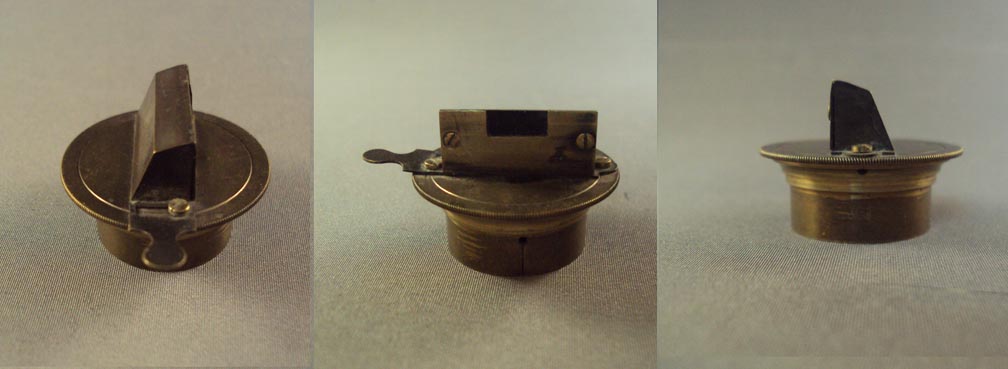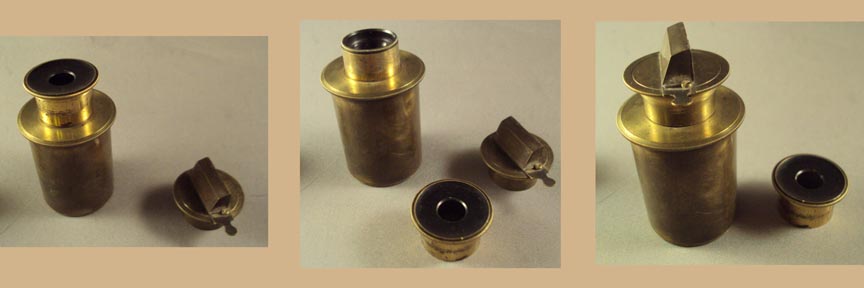
Dioptricein 1611. Not originally intended for use with a microscope, it is essentally a prism that allows one to look at a subject and at the paper which he is drawing on at the same time. Wollaston patented the device in 1807 and it was soon adapted to microscopes; it is unknown if Wollaston was the first to adapt the device to microscopes, but this would not be surprising at all since he designed many optical improvements for the microscope. The earliest versions used with microscopes, like the one shown here, were simply a prism which was mounted on an eyepiece cover; the cover over a standard eyepiece could be replaced with the camera lucida cover. The user would look both through the camera and at the paper at the same time by placing his pupil about half over the camera opening. This proved difficult however as achieving focus on both was not easy. Not long afterwards, most makers attached accessory lenses in front of the camera to allow proper focus on the subject and the paper. At first these were fixed, but later more than one was supplied and each could swivel in or out of the field of view. Other types of camera lucida varied in their details such as the location and method of attachment to the microscope eyepiece. These accessories were seldom signed, but one in this collection has a Nachet signature. A simpler if not elegant version had only an angled piece of flat tinted glass as its optical element. This type was first reported by Lionel Beale in his 1857 edition of How to Work with the Microscope and continued to be supplied for many years. An example of a Beale type camera lucida supplied by the later American Firm of Bausch & Lomb is associated with an example of the 'Model' Microscope in this collection.
